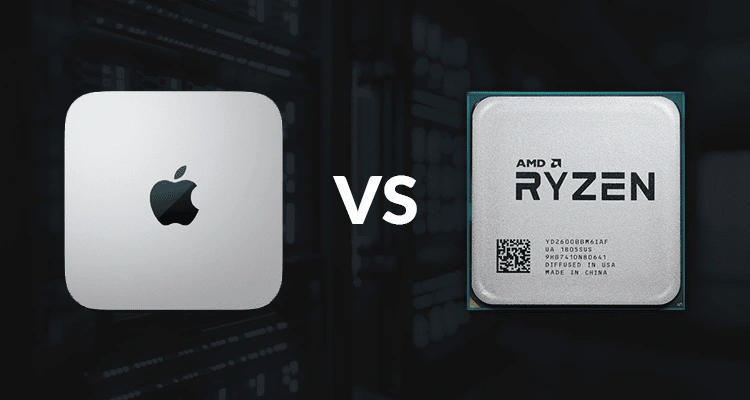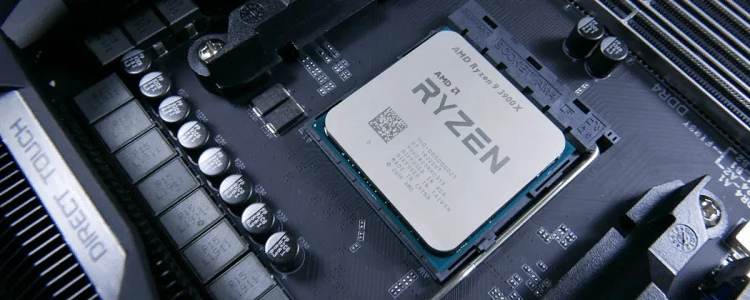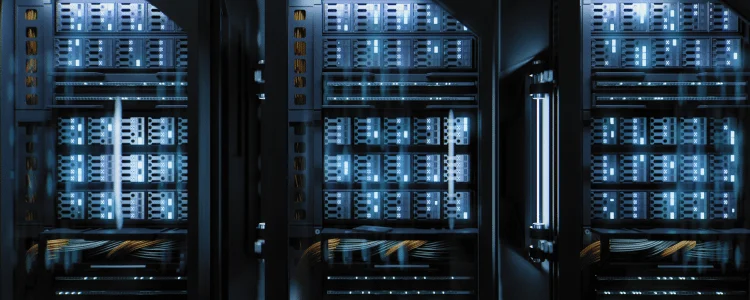Apple M1 vs AMD Ryzen Servers

The Mac mini was the first desktop-class Mac to use Apple Silicon, which processes 5x quicker than other Apple desktop PCs. On the other hand, AMD is a high-performance computer processor and graphics technology that is largely utilized for gaming and built for high performance.
Both the Mac mini and AMD are powerful server processors that set the benchmark for speed, security, and scalability. Let’s compare M1 vs. Ryzen regarding their uses, performance, and scalability.

Apple M1 Mac Mini
The Mac Mini, also known as M1 Mac, is Apple’s most compact, portable desktop computer with advanced features that can transform any screen into a smart computer running on the Mac operating system. Apple Inc developed Mac Mini. The Mac Mini has an Apple M1 chipset with integrated graphics, a 16-core Neural Engine, and an 8-core GPU. As the first desktop Mac with Apple Silicon, the Mac mini was first made available in January 2005 and is still a strong contender today. The Apple M1 processor has also made an impressive showing on PassMark.
With the addition of the M1 processor, the entry-level Mac can now compete with any mighty desktop Mac in terms of computing performance. The M1 model retains the pattern of the design with no keyboard, mouse, or monitor since it has always been a simple device. The Mac mini has a broad range of users, from low-cost dorm PCs to powerful server farms used by businesses to run their operations. This workstation has always been adaptable because of its compact design and I/O possibilities.
The Mac mini, MacBook Pro, and MacBook Air are versatile devices and are typically used to connect to other devices. For instance, if you already own a screen, keyboard, and mouse, you can couple those with the Mac mini rather than buying new ones, but you may also choose to have them pre-installed.
Uses for the Mac Mini
A Mac mini can be used for many purposes like any other computer. However, because of its portability, the Mac mini is ideal for:
- Sharing presentations to screen
- Accessing emails
- Sharing photos on a TV screen
- Playing games
- Music streaming through an app like Spotify
- Digital signage
Benefits of the Mac Mini
The Mac mini offers many significant advantages, such as:
- It is Apple’s least expensive Mac model available.
- The ideal size to serve as the focal point of a “digital house.”
- It includes pre-installed applications, including FaceTime, iBooks, Maps, iTunes, and Mail.
- The numerous ports make it look like a computer more than a media player.
- Bluetooth and Wi-Fi.
- According to Apple, the tablet can “keep up with PCs twice its size” because it uses fourth-generation Intel Core processors.
- Easy to install and set up the keyboard, monitor, and mouse.
Ports and Connections
The 2020 model Mac Mini has two Thunderbolt 3/USB 4 connections that allow users to attach a screen, keyboard, hard drive, mouse, dock, or any other USB 4 or Thunderbolt 3 peripheral. Also, there are two USB-A ports for additional peripheral connectivity and a headphone port for sound/ audio experts, while there are just two Thunderbolt 3 ports on the M1-based Mac mini. Thunderbolt connections to the M1 processor are limited to one display.
Connecting a dock is limited to output to one Thunderbolt screen with two Thunderbolt ports. The Mac mini is the only Apple Silicon-based Mac with HDMI, allowing it to support one more extra screen. The Mac mini has a 10/100/1000BASE-T Gigabyte Ethernet connector in addition to 802.11ac Wi-Fi and IEE 802.11a/b/g/n compatibility. Only the Intel variant can be upgraded to a 10 GB Ethernet connection for an additional $100.
Installation and Upgradability
Apple’s compact desktop can be used in any setting. The base 2020 model comes with 256GB of storage, an Apple M1 processor, and 8 gigabytes of 2666MHz DD4 RAM. The starting price for this base configuration is $699, which is $100 less expensive than the 2018 model. Users can add up to 2TB of storage and 16GB of RAM to the 2020 Apple Silicon model when they purchase.
If you purchase the 2018 Intel model, you can customize it with a 6-core 8th-generation Intel Core i7 processor running at 3.2 GHz with a Turbo Boost of up to 4.6 GHz, up to 64 gigabytes of RAM, and up to 2 TB of storage.
Mac Mini Pricing
Mac Mini is Apple’s most affordable Mac, with pricing starting at $699 for an M1 model with 8GB RAM and a 256GB SSD. However, the most beneficial Mac mini offers often result in price reductions of between $50 and $150. Intel processors are available in custom combinations starting at $2,899.00.

Advanced Micro Devices (AMD)
An Advanced Micro Devices (AMD) processor is a computer processor designed by AMD, an American semiconductor and technology company. The primary purpose of AMD’s central processing units (CPUs) is to compete with Intel®, a considerably larger company. The same program can run on AMD and Intel® processors but not on the same motherboard. The goal of the new generation of AMD processors is to incorporate both graphics and CPU cores onto a single chip. Read more on Intel vs. AMD.
AMD has become one of the largest manufacturers of desktop CPU technology through expansion and acquisitions, as well as development of servers, high-performance computing (HPC) and artificial intelligence (AI) processors, GPU graphics technology, field programmable gate array (FPGA) processors, and network accelerators. AMD processors are known for affordability, high performance, value, and processing speed.
The AMD Ryzen 7 5800X features 8 cores, 16 threads, and clocks at a maximum frequency of 4.70 GHz. The CPU can accommodate up to 128 GB of memory across two (Dual Channel) memory channels.
Uses of AMD Servers
Some of the pros of AMD servers include:
- Super-fast processing speeds.
- Deep compatibility.
- Modernized security.
- Superior graphics performance.
- Excellent gaming processors.
List of AMD Laptop Processors
Many efficient AMD laptop processors are available, including the AMD AthlonTM range and Ryzen 4000 and 3000 series. These include:
- AMD Athlon Gold 3150U: 2 cores, 4 threads, 3 GPU cores, and a 2.4 GHz base clock speed.
- AMD Ryzen 7 4700U: 8 cores, 8 threads, 7 GPU cores, and a 2.0 GHz base clock speed.
- AMD Ryzen 7 3700C: 4 cores, 8 threads, 10 GPU cores, and a 2.3 GHz base clock speed.
- AMD Ryzen 7 PRO 4750U: 8 cores, 16 threads, 7 GPU cores, and a 1.7 GHz base clock speed.
- AMD Ryzen 3 3250U: 2 cores, 4 threads, 3 GPU cores, and a 2.6 GHz base clock speed.
- AMD Ryzen 9 4900H: 8 cores, 16 threads, 8 GPU cores, and a 3.3 GHz base clock speed.
Learn more about AMD Ryzen 7000 vs. 5000

Comparisons between Apple M1 vs AMD Servers
It is difficult to determine which is better between an M1 vs AMD Ryzen server without knowing the specific context and requirements of your situation. Here are some factors to consider when comparing the two:
- Performance
The hardware in servers is typically more advanced than that in desktop computers like the Mac Mini. As a result, an AMD server has more impressive performance, processing power, and memory, particularly when it comes to workloads that demand a lot of computing. The M1 trails narrowly and sometimes beats the AMD chip in single-core performance.
- Cost
Depending on the specific model and setup, the price of an AMD server versus a Mac Mini can differ considerably. The cost of servers is typically higher than that of desktop computers like the Mac Mini, but this is not always true.
- Scalability
A server might be a better alternative if you need to increase your processing capacity in the future because it is explicitly built to be more scalable. The Mac Mini, on the other hand, is a stand-alone desktop computer and might not be as flexible as a server.
- Ease of Use
Smaller businesses or people without previous server administration knowledge may find Mac Minis a preferable option because it is a consumer-grade product. They are typically simpler to configure and maintain than servers. On the other hand, servers might be trickier to configure and manage, particularly if you are unfamiliar with server-grade software and hardware.
You can also consider the table below:
| Features | Mac Mini | AMD Servers |
|---|---|---|
| Multi-core tests | Performance cores: 4 Efficiency cores: 4 Graphic cores: 8 | Performance cores: 8 Efficient cores: 2 Graphic cores: 8 |
| Threads | 8 | 16 |
| A-Core | 3.20 GHz 4x Firestorm | 3.80 GHz (4.70 GHz) |
| GPU | 8 core | No iGPU |
| Memory | LPDDR4X-4266 | DDR4-3200 |
| Max. Memory | 16 GB | 128 GB |
| ECC | No | Yes |
| Bandwidth | 68.2 GB/s | 51.2 GB/s |
| Thermal Design Power (TDP) | 15 W | 105W |
| Virtualization | Apple Virtualization Framework | AMD-V, SVM |
| Operating systems | MacOS | Windows 10, Windows 11, and Linux |
| Socket | N/A | AM4 (LGA 1331) |
Summary
After comparing Mac Mini and AMD Ryzen servers, it is clear that both devices have their specific benefits and drawbacks. A major difference between AMD servers and MAC Mini is that AMD servers are more powerful, specialized devices designed exclusively for hosting and providing data and resources to numerous users. In contrast, a Mac Mini is a small, portable computer made for general usage that does not require the server’s raw power and scalability.
The ideal option for you will depend largely on your unique needs and preferences. To choose the best solution for your project, you must consider factors such as the required processing power, better performance, memory, the number of users, the difficulty of your task, and your budget. However, if you want to host and customize your server, you can contact us at Server Mania for more information to discuss your hosting needs and specific applications.
Was this page helpful?

